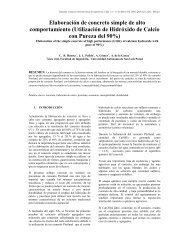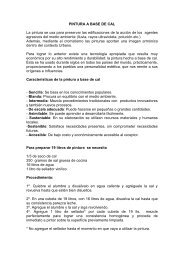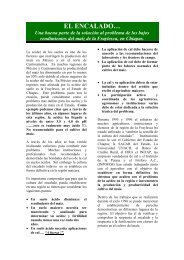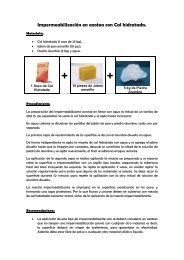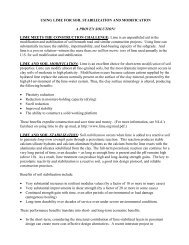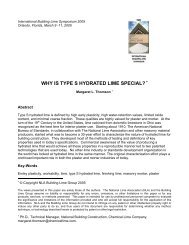Land Contamination: Technical Guidance on Special Sites: Acid Tar ...
Land Contamination: Technical Guidance on Special Sites: Acid Tar ...
Land Contamination: Technical Guidance on Special Sites: Acid Tar ...
Create successful ePaper yourself
Turn your PDF publications into a flip-book with our unique Google optimized e-Paper software.
2. INDUSTRIAL PROCESS/FACILITY DESCRIPTIONKEY QUESTIONS COVERED IN THIS SECTION1. What is acid tar?2. What are the main features of acid tar disposal sites?3. How were acid tars managed?4. What are the processes that produce acid tars and how do the acid tars differ?5. What quantities of acid tars may be expected to be associated with each refining process?2.1 ScopeThis secti<strong>on</strong> presents a general overview of the key points relating to sites where acid tarsmay be encountered, the types of sites that may have c<strong>on</strong>taminati<strong>on</strong> of this nature and theirdistributi<strong>on</strong> and extent in the UK. It also provides a descripti<strong>on</strong> of the main processes andactivities that have occurred <strong>on</strong> sites where acid tars have been stored or disposed of inlago<strong>on</strong>s and which are likely to have resulted in ground c<strong>on</strong>taminati<strong>on</strong>. Whilst acid tar lago<strong>on</strong>sites can c<strong>on</strong>tain a range of c<strong>on</strong>taminants (as a result of disposal of other wastes with the acidtar) the main c<strong>on</strong>taminants of c<strong>on</strong>cern that will be dealt with in detail in this secti<strong>on</strong>, are thosethat are associated with acid tars themselves.2.1.1 What c<strong>on</strong>stitutes acid tars<strong>Tar</strong>s are liquid or semi-solid residues of mixed chemical compositi<strong>on</strong> resulting from thecarb<strong>on</strong>isati<strong>on</strong> of organic materials in a high temperature thermal process. <strong>Acid</strong> tars arenormally defined as tars of high sulphuric acid c<strong>on</strong>tent and arise from the refining of oils bythe additi<strong>on</strong> of sulphuric acid, thereby c<strong>on</strong>taining sulph<strong>on</strong>ated organic compounds.The relevant definiti<strong>on</strong> of land required to be designated as a <strong>Special</strong> Site in the C<strong>on</strong>taminated<str<strong>on</strong>g>Land</str<strong>on</strong>g> (England) Regulati<strong>on</strong>s 2000 is“land which is c<strong>on</strong>taminated by reas<strong>on</strong> of waste acid tars in, <strong>on</strong> or under the land”.In these regulati<strong>on</strong>s, “waste acid tars” are defined as tars that:(a) c<strong>on</strong>tain sulphuric acid;(b) were produced as a result of the refining of benzole, used lubricants or petroleum; and(c) are or were stored <strong>on</strong> land used as a retenti<strong>on</strong> basin for the disposal of such tars”.<strong>Acid</strong> tars should not be c<strong>on</strong>fused with tar acids. The latter are acidic compounds within tarssuch as phenol, cresols and xylenols which may be extracted by distillati<strong>on</strong> and subsequentlyrefined. <strong>Tar</strong>s normally c<strong>on</strong>tain tar acids but tars are <strong>on</strong>ly termed acid tars where sulphuricacid has been added as part of a refining process.R&D <str<strong>on</strong>g>Technical</str<strong>on</strong>g> Report P5-042/TR/04 6



